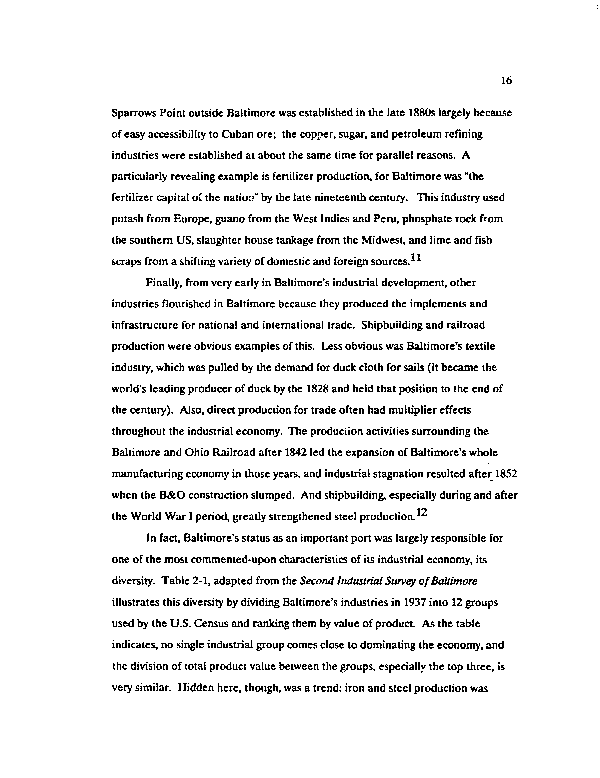|
16
Sparrows Point outside Baltimore was established in the late 1880s largely because
of easy accessibility to Cuban ore; the copper, sugar, and petroleum refining
industries were established at about the same time for parallel reasons. A
particularly revealing example is fertilizer production, for Baltimore was "the
fertilizer capital of the nation" by the late nineteenth century. This industry used
potash from Europe, guano from the West Indies and Peru, phosphate rock from
the southern US, slaughter house tankage from the Midwest, and lime and fish
scraps from a shifting variety of domestic and foreign sources.
Finally, from very early in Baltimore's industrial development, other
industries flourished in Baltimore because they produced the implements and
infrastructure for national and international trade. Shipbuilding and railroad
production were obvious examples of this. Less obvious was Baltimore's textile
industry, which was pulled by the demand for duck cloth for sails (it became the
world's leading producer of duck by the 1828 and held that position to the end of
the century). Also, direct production for trade often had multiplier effects
throughout the industrial economy. The production activities surrounding the
Baltimore and Ohio Railroad after 1842 led the expansion of Baltimore's whole
manufacturing economy in those years, and industrial stagnation resulted after 1852
when the B&O construction slumped. And shipbuilding, especially during and after
17
the World War I period, greatly strengthened steel production.l^
In fact, Baltimore's status as an important port was largely responsible for
one of the most commented-upon characteristics of its industrial economy, its
diversity. Table 2-1, adapted from the Second Industrial Survey of Baltimore
illustrates this diversity by dividing Baltimore's industries in 1937 into 12 groups
used by the U.S. Census and ranking them by value of product. As the table
indicates, no single industrial group comes close to dominating the economy, and
the division of total product value between the groups, especially the top three, is
very similar. Hidden here, though, was a trend: iron and steel production was
|

